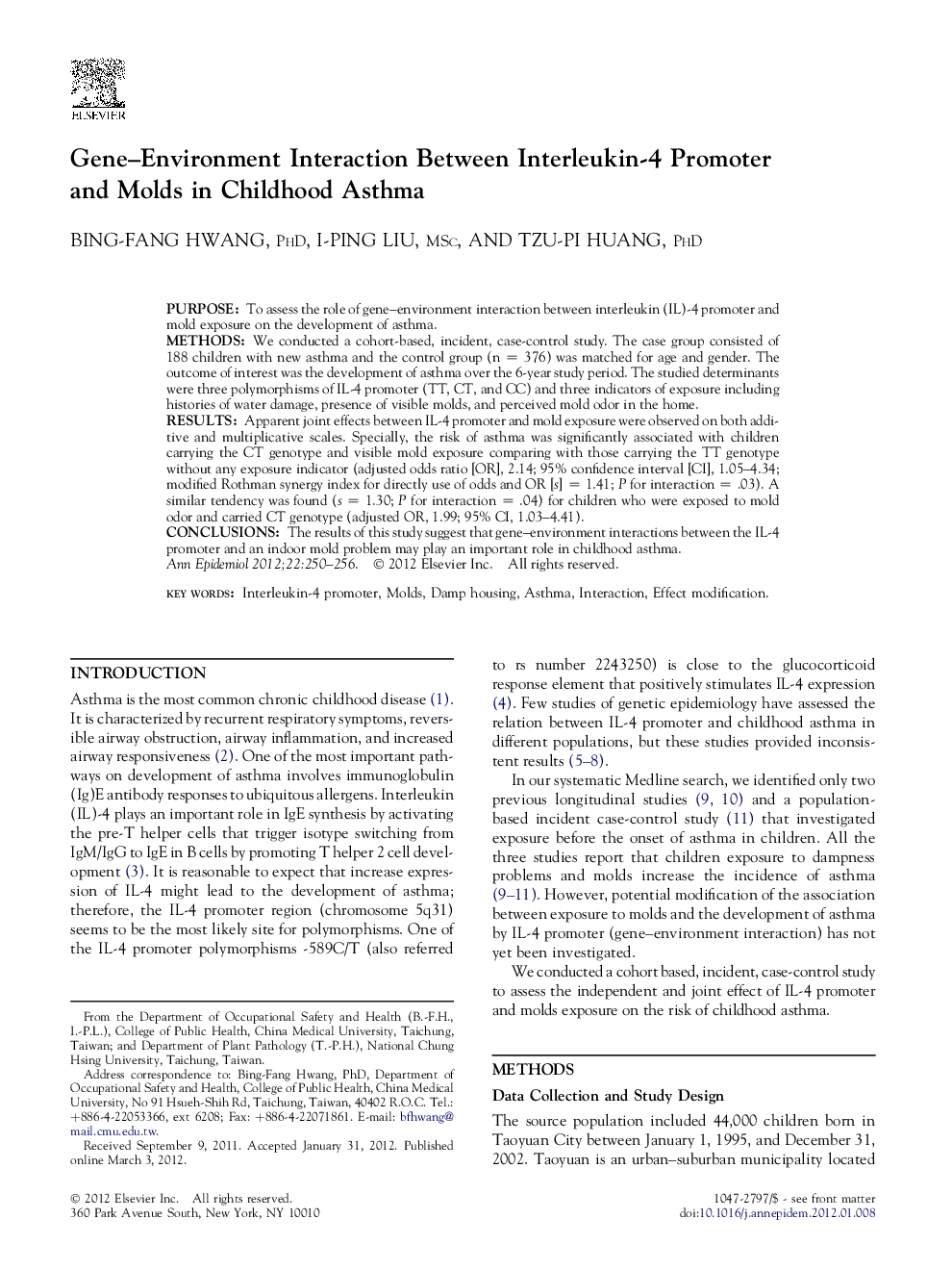| Article ID | Journal | Published Year | Pages | File Type |
|---|---|---|---|---|
| 3444443 | Annals of Epidemiology | 2012 | 7 Pages |
PurposeTo assess the role of gene–environment interaction between interleukin (IL)-4 promoter and mold exposure on the development of asthma.MethodsWe conducted a cohort-based, incident, case-control study. The case group consisted of 188 children with new asthma and the control group (n = 376) was matched for age and gender. The outcome of interest was the development of asthma over the 6-year study period. The studied determinants were three polymorphisms of IL-4 promoter (TT, CT, and CC) and three indicators of exposure including histories of water damage, presence of visible molds, and perceived mold odor in the home.ResultsApparent joint effects between IL-4 promoter and mold exposure were observed on both additive and multiplicative scales. Specially, the risk of asthma was significantly associated with children carrying the CT genotype and visible mold exposure comparing with those carrying the TT genotype without any exposure indicator (adjusted odds ratio [OR], 2.14; 95% confidence interval [CI], 1.05–4.34; modified Rothman synergy index for directly use of odds and OR [s] = 1.41; P for interaction = .03). A similar tendency was found (s = 1.30; P for interaction = .04) for children who were exposed to mold odor and carried CT genotype (adjusted OR, 1.99; 95% CI, 1.03–4.41).ConclusionsThe results of this study suggest that gene–environment interactions between the IL-4 promoter and an indoor mold problem may play an important role in childhood asthma.
